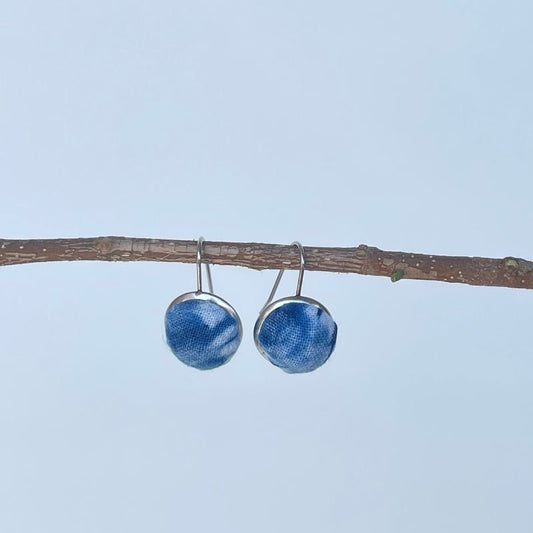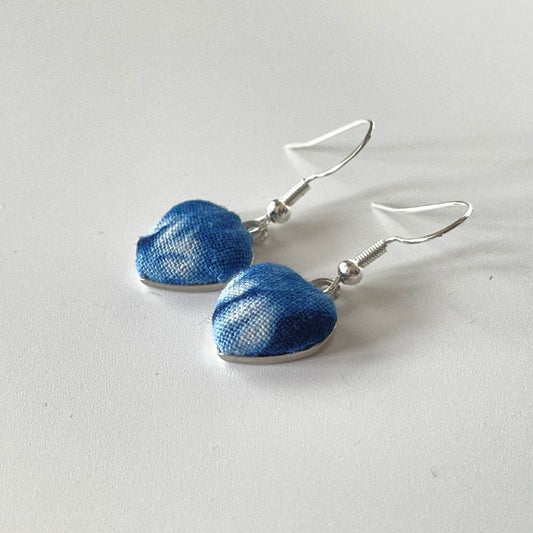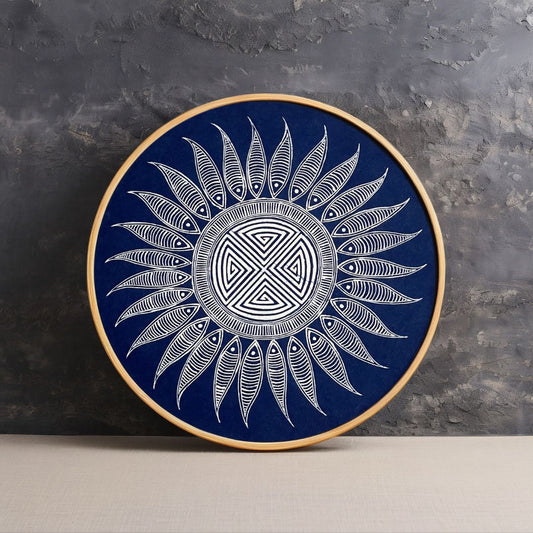Miao batik, a beautiful and ancient Chinese craft, is a tradition that has been passed down for generations. Known for its stunning patterns and rich colors, Miao batik stands out for its use of natural materials and time-honored techniques.
1. Tools of the Trade: What Makes Miao Batik Unique

Creating Miao batik requires precision and artistry, which is why specialized tools are essential. Each tool plays a critical role in crafting intricate designs and ensuring a high-quality final product.
-
Wax Knife (Batik Pen):
Miao artisans use three sizes of wax knives—small, medium, and large—depending on the thickness of the lines they need. These tools have evolved over time, from simple bamboo versions to advanced ones with copper blades. The copper blades allow for smooth, controlled drawing as the wax flows through them. -
Needle Board:
This tool features a wooden board with needles embedded in it, used to create dotted patterns, especially for traditional Miao hairstyles in the designs. -
Wax Bowl:
A small iron bowl is used to melt the wax. The wax must be kept at just the right temperature—too hot or too cold, and it won't work properly. -
Wax Block:
A block of wax is used to fill the wax knife. The artist dips the wax knife into the molten wax, then "loads" it by moving it across the wax block before drawing. -
Heat Source:
A charcoal or coal stove gently melts the wax. Maintaining the right heat is critical, as overheated wax can lose its flexibility. -
Flat Boards:
Wooden or glass boards are used to lay the fabric flat, ensuring smooth lines during the drawing process. -
Dye Containers:
Large clay pots or wooden barrels hold the dye, allowing the fabric to be fully immersed during the dyeing process.
2. Natural Materials: Eco-Friendly Ingredients in Miao Batik

Miao batik is not only an artistic tradition but also an environmentally friendly craft, thanks to its use of natural materials.
-
Wax:
- Beeswax: Traditionally the most common wax used, known for its flexibility and smooth application.
- Tree Wax: Extracted from the resin of specific trees, offering a different texture and finish.
- Paraffin Wax: A more modern and affordable option introduced in the 1960s.
-
Indigo Dye:
The deep blue color of Miao batik comes from indigo plants. There are three main types: large-leaf, round-leaf, and pointed-leaf. The large-leaf variety provides the richest color. -
Alkaline Additives:
Traditionally, wood ash was used to create an alkaline solution. Today, baking soda and other modern substitutes are often used. -
Herbal Additives:
Various herbs, including walnut leaves and yellow bark, enhance the dye’s color and help it penetrate the fabric. -
Salt and Urea:
These are added to the dye to help fix the color and improve the evenness of the dyeing.
3. The Miao Batik Dyeing Process: Step by Step

The dyeing process is where the magic happens. Every step requires precision, patience, and a deep understanding of the craft.
Step 1: Preparing the Indigo Dye
- Fresh indigo leaves and stems are soaked in water to release their pigment.
- The liquid is then filtered and mixed with lime water, which thickens and stabilizes the color.
- Herbs and alkaline additives are added to enhance the dye’s richness.
Step 2: Drawing with Wax
- The artisan uses the wax knife to draw intricate patterns on the fabric.
- The wax creates a resist, meaning the dye won’t penetrate the areas covered by wax.
Step 3: Immersion in Dye
- The fabric is immersed in the indigo dye bath. Artisans must constantly move the fabric to ensure even coloring.
- Timing is crucial—too short, and the color will be faint; too long, and it may become too dark.
Step 4: Removing the Wax
- After dyeing, the fabric is boiled in water to remove the wax, revealing the intricate patterns underneath.
- The fabric is rinsed thoroughly to set the color and remove any excess dye.
4. Why Miao Batik Is an Eco-Friendly Choice

Miao batik is a model of sustainable craftsmanship:
- Natural Materials: All dyes and waxes are plant-based, with no synthetic chemicals involved.
- Reusable Resources: Leftover wax can be re-melted and reused, reducing waste.
- Low Environmental Impact: Natural indigo and other plant-based dyes break down easily in the environment.
By choosing Miao batik, you’re not only embracing a rich cultural tradition but also supporting eco-friendly practices that benefit both artisans and the planet.
Miao batik is a beautiful fusion of artistry, tradition, and sustainability. Each piece tells a story, crafted with care using time-honored techniques and natural materials. When you purchase a Miao batik item, you’re not just buying art—you’re supporting a legacy of craftsmanship and environmental responsibility.
Explore our collection of Miao batik products and bring a piece of this timeless tradition into your home.










